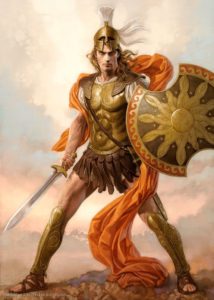
The damsel in distress is one of the oldest female archetypes and, until recently, has been a very popular archetype in literature and movies. These women are passive, naive, innocent, easy targets, and always waiting to be rescued. In the archetype’s original form, they are also pure and kind, their innocence not affected by the evil in the world around them. Think fairy tales like Cinderella, Rapunzel, Snow White, and Sleeping Beauty. Stories that we’ve all heard at some point and many of us grew up on. The women are all in some kind of peril or dire circumstance until a prince comes to save them.
There are a number of movies that show this archetype clearly. The first, very similar to the fairy tales, is Enchanted. It begins in the classic fairy tale style with the heroine Giselle in the animated fairy tale land of Andalasia, living in the forest awaiting her true love. Through the machinations of a witch, Giselle finds herself in New York City with all of her fairy tale innocence, naivety, and complete trust in everyone intact. Robert, not a prince but an average New Yorker, becomes the hero, reluctantly, and they live happily ever after in New York.
An example a bit further away from the fairy tale style is Maid in Manhattan. Jennifer Lopez plays Marisa who is a maid in a hotel, supporting her son. Her friends all think she has management potential but Marisa is not convinced and is reluctant to apply. She then meets Chris, a political candidate, who falls for her believing she’s a guest at the hotel, not the maid. In the end, Chris is convinced by Marisa’s son that he does love her, and he comes to find her at her new hotel, again working as a maid. After this, she starts her own business, and they live happily ever after.
Pretty Woman is another good example. Most of us are familiar with this movie where Julia Roberts plays a hooker, Vivian, and Richard Gere plays Edward, a successful, but unhappy businessman. Vivian wants more out of life, but hasn’t started working for it when Edward hires her as an escort for a week. The two fall in love, and Edward comes for Vivian in the end in white knight style with her as a princess in her tower/apartment.
All of the women above have great potential, but they don’t realize it until a man comes in to help show them the way. Some of them are not as naive as classic fairy tale damsels in distress or quite as innocent, but they do seem to believe in the general goodness of the world and the people in it. Several other examples include Baby in Dirty Dancing, Rose in Titanic, and Buttercup in The Princess Bride.
This archetype has fallen out of favor in recent years with the arrival of modern feminism. Women who don’t fight back, who drift through life and wait to be rescued, are not seen as positive role models. Modern women are supposed to fight back and to save themselves. The modern damsel in distress may start out as a waif, but she is forcefully pushed into action, realizing her own strength and seeing that people are not always as good as we’d like to believe.
Legally Blonde is one example of a modern damsel in distress. Elle, played by Reese Witherspoon, is dumped by her boyfriend because he needs to have a serious girlfriend since he’s going to law school. Elle decides to go to law school herself to try to win him back by proving she can be serious. She succeeds in law school, realizing that she actually enjoys it and is good at it too. When her boyfriend suddenly wants her back, she also realizes that she succeeded by herself and doesn’t need him at all. Instead of being saved by the guy, the woman gets to save herself.

CC image by Kathryn Connell
One more example of the modern version is Thelma and Louise. Both are unhappy women in bad relationships. Louise convinces Thelma to go away for a weekend together. Throughout their various adventures, the two women realize what they’re capable of. In essence, the two women save each other.
The more recent fairy tale Disney movies have taken a new turn as well. Instead of the classic Rapunzel story we have Tangled, and Cinderella and Snow White are replaced by Brave and Frozen. The heroines in Tangled, Brave, and Frozen are feisty and independent, not needing or wanting to be rescued by men, especially with all of the men in Brave being positively ridiculous.
Though less so, this archetype is still popular today, because I think both men and women find things to appreciate in it. As women, we want to be able to handle ourselves and be independent, but some days it would be really nice to have someone rescue us. I also think that men like rescuing women and being the hero. I’m not saying that men want women to be weak, passive, or naive, but every once in a while they want to sweep a woman off her feet. Given the modern twist this archetype has taken, I’m curious to see where it goes from here.
By Melissa Blakely




